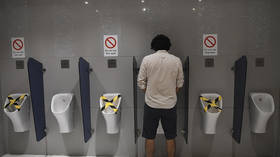India to make dozens of cities ‘beggar free’
New Delhi is planning a “comprehensive” rehabilitation for the urban poor in 30 cities
India has identified 30 cities that it wants to make “free of beggary” by 2026, the Times of India reported on Monday. The rehabilitation program, aimed at those begging in the streets, will be undertaken as part of the country’s Support for Marginalized Individuals for Livelihood and Enterprises (SMILE) scheme.
The list includes ten places of religious significance, including Ayodhya, the town in Uttar Pradesh state where Prime Minister Narendra Modi recently inaugurated a temple devoted to the Hindu deity Ram. Guwahati, Madurai, Srinagar, Puducherry, Shimla, Mysuru, and Jaisalmer are some of the other cities named in the list.
Twenty-five designated cities have already forwarded an “action plan,” and surveys are already being launched for the begging community to find out, for instance, what they would want to do for livelihood, the Times of India report noted. It added that the plan includes a survey, mobilization, relocation to a shelter, and a “comprehensive” rehabilitation scheme through education, skill development, and employment.
Next month, India’s Ministry of Social Justice and Empowerment will launch a national portal and mobile application for storing data on persons engaged in begging. The funding for implementing the action plan will come from the federal government. In its 2011 census, India found that over 400,000 people in the country are “beggars and vagrants.”
New Delhi’s drive to lessen the number of poor on its streets comes at a time when the country’s gross domestic product (GDP) is witnessing major spikes, with these trends set to continue over the next few years. In December last year, the S&P Global Ratings predicted that India would become the world’s third-largest economy by 2030, and it is also set to be the fastest-growing economy over the next three years.
Last December, the country’s Reserve Bank bumped up its GDP growth projection for the current financial year to 7% from a previous estimate of 6.5 %.
Unemployment, a major cause of worry for the Indian government, has also been trending downward in recent years. The unemployment rate for individuals aged 15 and over hit a six-year low of 3.2% from July 2022 to June 2023, as per data in the Periodic Labor Force Survey Annual Report 2022-2023.
Last year, a report on poverty by the government advisory body NITI Aayog said the country had lifted 135 million Indians out of poverty in the previous five years. The report, published in July, assessed “acute deprivations in health, education, and standard of living” using UN-approved parameters. In 2022, around 15% of the Indian population lived in poverty, compared to 24.8% in 2015-16.
Where India Meets Russia – We are now on WhatsApp! Follow and share RT India in English and in Hindi
You can share this story on social media:








Comments are closed.